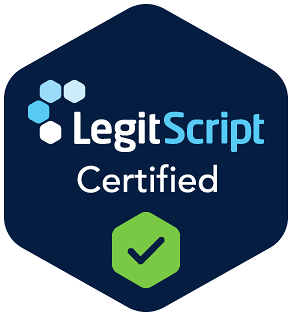Triggers are stimuli—people, places, emotions, or situations—that can evoke cravings or urges to use substances again. In addiction recovery, triggers can be internal, like stress or anxiety, or external, such as social settings, certain locations, or even specific times of day.
Recognizing what triggers a person’s cravings is essential for preventing relapse. Because addiction rewires the brain’s reward pathways, encountering triggers can activate intense desires to use substances even after long periods of sobriety.
Why a Trigger-Free Environment Matters
Creating a trigger-free environment means minimizing or eliminating exposure to these high-risk stimuli that may lead to relapse. Such an environment provides a safe space where individuals can focus on healing without constant reminders or temptations.
While it’s impossible to avoid every trigger, especially in daily life, reducing exposure during the critical early stages of recovery significantly lowers the chance of relapse. This environment supports emotional stability, encourages healthy habits, and builds confidence in managing cravings.
Common Triggers to Identify and Avoid
Triggers vary from person to person but commonly include:
- People who use substances or encourage use
- Places associated with past drug or alcohol use
- Stressful situations or overwhelming emotions
- Certain social events, like parties or bars
- Negative thought patterns or memories
- Physical sensations linked to substance use, such as pain or fatigue
Identifying personal triggers through counseling or self-reflection helps individuals create effective avoidance strategies.
How to Assess Your Environment for Triggers
A thorough assessment of one’s living and social environment is a key step in recovery. This process involves:
- Reflecting on past relapse episodes to identify common triggers
- Noticing patterns of cravings related to people, places, or feelings
- Seeking input from counselors or support groups who can offer perspectives
- Making a list of triggers to monitor and manage proactively
This assessment informs changes to living arrangements, social circles, and daily routines.
Strategies for Creating a Trigger-Free Living Space
The home environment is critical in recovery since it is where people spend most of their time. Some strategies to create a trigger-free home include:
- Removing alcohol, drugs, or paraphernalia from the home
- Avoiding exposure to media or music associated with substance use
- Establishing routines that promote healthy habits like exercise and mindfulness
- Creating a calm, organized space that reduces stress and anxiety
- Setting boundaries with visitors who might trigger cravings
A safe home environment acts as a strong foundation for recovery.
Building a Supportive Social Network
Recovery is often challenged by social pressure or the presence of people who use substances. Building a social network that supports sobriety is vital.
This may mean distancing from old friends or acquaintances connected to substance use and seeking out sober friends, support groups, or recovery communities.
Engaging with people who understand and encourage recovery goals fosters accountability and emotional support.
The Role of Counseling and Therapy in Managing Triggers
Counseling helps individuals identify hidden or subtle triggers and develop personalized coping strategies. Therapists guide clients in managing stress, regulating emotions, and practicing mindfulness to reduce the impact of triggers.
Cognitive Behavioral Therapy (CBT) is particularly effective for challenging negative thought patterns and learning healthier responses.
Regular therapy sessions provide ongoing support and adjustment of strategies as recovery progresses.
Mindfulness and Stress Reduction as Tools
Mindfulness practices teach individuals to observe cravings and triggers without judgment or immediate reaction. This awareness creates space to choose healthier behaviors rather than succumbing to urges.
Stress reduction techniques such as deep breathing, meditation, and yoga help manage emotional triggers that often lead to relapse.
Incorporating these practices into daily routines strengthens resilience.
Planning for High-Risk Situations
While a trigger-free environment is ideal, it’s not always possible to avoid every challenge. Preparing for high-risk situations—such as holidays, family gatherings, or stressful events—is essential.
Planning may include setting limits on time spent in triggering environments, having a support person available, or practicing refusal skills.
Being proactive reduces anxiety and increases confidence in navigating temptation.
Technology and Apps to Support a Trigger-Free Lifestyle
Various mobile apps and online tools provide support by tracking cravings, offering relaxation exercises, or connecting individuals with recovery communities.
These resources can remind users of their goals, provide immediate coping strategies, and maintain motivation.
Technology offers accessible, real-time help when triggers arise unexpectedly.
The Impact of a Trigger-Free Environment on Long-Term Recovery
Sustaining long-term recovery is a gradual process that involves building new habits and thought patterns. A trigger-free environment supports this by reducing relapse risk and reinforcing sobriety.
Over time, as individuals build coping skills and confidence, they can gradually reintroduce some previously triggering situations with greater control.
However, maintaining awareness and vigilance about triggers remains important throughout recovery.
Challenges in Creating a Completely Trigger-Free Environment
Creating a fully trigger-free environment can be challenging due to factors like family dynamics, work environments, or community exposure.
Balancing realistic expectations with proactive strategies helps individuals maintain recovery without feeling overwhelmed.
Support from counselors, peers, and loved ones is critical in navigating these challenges.
Encouraging Compassion and Patience in Recovery
Recovery is rarely a straight path. Compassion toward oneself and patience with the process are essential qualities.
Understanding that encountering triggers is a normal part of recovery helps reduce guilt or shame if cravings arise.
Supportive environments that foster kindness rather than judgment enhance healing.
Final Thoughts: Building a Foundation for Lasting Sobriety
Creating a trigger-free environment is a vital component of addiction recovery. It provides a secure foundation where individuals can focus on healing, develop healthy coping mechanisms, and build confidence.
While it’s impossible to eliminate all triggers, awareness and strategic management significantly improve the chances of sustained sobriety.
By committing to a trigger-free lifestyle and seeking support, those in recovery pave the way for lasting wellness and fulfillment. Call us today at 833-820-2922.


